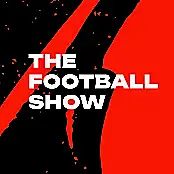MLS wanted a second club in New York to - in the league’s own words - capitalise on "a legendary sports town, as well as a thriving global city with a rapidly expanding soccer fanbase".
The establishment of New York City FC was billed as the USA’s biggest city’s coming of age as a soccer hotbed. In truth, however, one club turned New York into a soccer hotbed long before NYC FC entered the fray.
The New York Cosmos were the original American super-club. In fact, the argument could be made that they were world football’s original super-club. They certainly pioneered the kind of transfer strategy that would soon be adopted by Real Madrid and dubbed the Galácticos polic; signing some of the sport’s biggest names, attracting sell-out crowds to Giants Stadium in the 1970s.
Pelé, Franz Beckenbauer and Carlos Alberto all played for the Cosmos at the height of their popularity, with others like Italian striker Giorgio Chinaglia and American goalkeeper Shep Messing featuring as cult heroes in what became the most romantic tale in North American football history.

New York Cosmos players Johan Cruyff, Giorgio Chinaglia and Franz Beckenbauer during training for their Soccer Bowl match against Tampa Bay Rowdies. Image: Peter Robinson / EMPICS Sport
But as quickly as the Cosmos rose, they vanished. With debts piled high and crowds dwindling the club was wound up in 1985. Once in a lifetime, they said. At least until the Cosmos were revived in 2010 with a blaze of mainstream media exposure.
Denied entry to Major League Soccer (MLS), the resurrected club entered the second tier of American football, the NASL, splashing the cash to sign players like Raúl González, Marcos Senna and Niko Krancjar.
They won three North American Soccer League (NASL) titles in four years, but just weeks after winning this year’s Soccer Bowl, the Cosmos laid off their entire squad and coaching staff. Nobody has been seen at the club’s Manhattan headquarters since, with the organisation essentially shutting up shop due to spiraling debts and reckless mismanagement. The parallels between the demise of the storied franchise of the 1970s and '80s and the modern day one are striking.
So have the Cosmos died for the second time in a generation, or are they waiting to be resurrected once more? That is somewhat unclear, with reports claiming the club is currently looking for new buyers. But whether or not the Cosmos are to emerge for the 2017 season, there’s a discussion to be had over what their apparent demise says about the North American game.

The Cosmos, and the NASL by extension, were North American football’s wild child. While MLS researches and scopes out every market they enter, almost to excess, the NASL would establish new teams and franchises in cities without much rhyme or reason - like in Oklahoma City or Puerto Rico. They revelled in their image as the anti-MLS, embracing an open system over the closed shop structure of their top-flight counterparts.
The freedom they gave to clubs, like the Cosmos, became their selling point to those who desired a more European-style format for the North American game. The Cosmos were the embodiment of that ethos, acting as a flag-bearer for the NASL. There’s something greatly symbolic about their demise at a time when the NASL is also suffering something of an existential crisis, with a number of clubs decamping to either MLS or the MLS-associated United Soccer League (USL).

New York Cosmos' Pele (c) looks on as teammate Giorgio Chinaglia (l) runs at the Seattle Sounders defence. Image: Peter Robinson / EMPICS Sport
It comes just as many in North American football have started to consider whether the leash should be loosened on its clubs. Whether MLS should bring itself in line with the rest of the global game, allowing clubs to spend whatever they like. The plight of the Cosmos doesn’t do much to support such an argument, though.
Their story has been used by MLS as a warning to those in North American football who may be tempted to spend beyond their means ever since the division’s inception. The rapid demise of the Cosmos, it could be argued, is the primary reason MLS operates the way it does, with a centralised structure, drafts, and a salary cap.
But was the Cosmos’ second coming doomed to fail because of the fundamental flaws of the NASL, or because of other factors? Despite their history and background, the Cosmos struggled to shout loud enough in what became a very noisy footballing market in New York.
Not being an MLS club counted against them once NYC FC and the New York Red Bulls sparked up a top flight rivalry, while the location of the Cosmos home stadium - in Nassau County on Long Island, a 45 minute train journey from central Manhattan - is also an issue.
Regardless of the nuances, the Cosmos’ current situation raises a red flag for the NASL model and the argument that came with it. Does the Cosmos’ turmoil prove that North American football is unprepared to adopt the kind of open system used in Europe? That might be a stretch, but the possibility of Stateside football one day ditching its stabilisers now seems more distant than ever before.
Download the brand new GoLoud App in the Play Store & App Store right now! We've got you covered!
Subscribe to OffTheBall's YouTube channel for more videos, like us on Facebook or follow us on Twitter for the latest sporting news and content.








